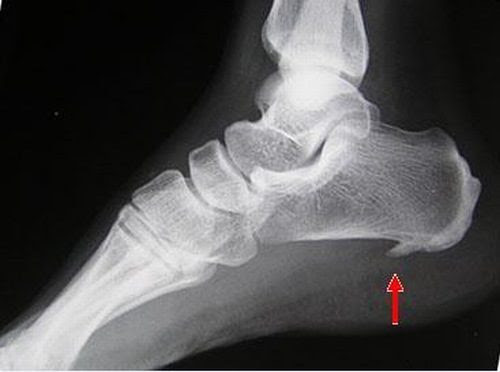Bone spurs are smooth, hard bony structures that form at the end of bones. Most bone spurs are benign. However, some can break off and become lodged in the knee joint. These foreign bodies can lock the joint and make it difficult to move.
What is bone spur?
Bone spurs (also called osteophytes) are smooth, hard bony structures that form at the end of bones. They are often found in joints where two bones come into contact with each other.
Bone spurs can appear in:
- Hand
- Shoulder
- Neck
- Backbone
- Hip
- Knee
- Foot (heel)
Most bone spurs are benign. However, if they rub against other bones or press on nerves, you may feel pain and have difficulty moving.
Causes of bone spurs
The most common cause of bone spurs is damage caused by osteoarthritis or degenerative joint disease. The cushion between the joints and bones in your spine can degenerate as you age. Rheumatoid arthritis, lupus, and gout can also damage the joints.
Bone spurs can also form after an injury to a joint or bone. When your body thinks your bone is damaged, it can “heal” it by producing more bone in the affected area.
Other causes that can also cause bone spurs include:
- Overuse – if you run or dance non-stop for a long period of time.
- Genetics
- Diet
- Congenital bone problems
- Spinal stenosis

You may not know you have bone spurs until you have an X-ray.
Symptoms of bone spurs
You may not know you have bone spurs until you get an X-ray or get checked for other conditions. They only cause problems when they press on nerves, tendons, or other parts of your body. If that happens, you may feel:
- Pain in the affected joint
- Pain or difficulty moving and using the affected joints.
- Weakness, numbness, or tingling in your arms or legs if bone spurs are affecting your vertebrae.
- Sudden muscle cramps or weakness.
- Raised bumps under the skin, mostly on the hands or fingers.
- Difficulty controlling urination and bowel movements due to bone spurs affecting certain nerves in the spine (this is a very rare condition).
- Your symptoms may also get worse if you exercise or move in a way that puts stress on the affected joint.
- Some bone spurs can also break off and become lodged inside the knee joint. These are called “joint foreign bodies.” These can lock the joint and make it difficult to move.
Diagnosis of bone spurs
Typically, bone spurs will be evaluated first by a doctor, and then you will usually be referred to a specialist. You will see either a rheumatologist or an orthopedist. Rheumatologists specialize in treating problems with joints. Orthopedists focus on problems with the bones and joints. Your doctor will diagnose the spur by examining the bumps or by taking an X-ray to get a better look at the spur.
Other diagnostic tests your doctor may make include:
- CT scan. This is a procedure that uses X-rays to take detailed pictures of the inside of your body.
- MRI scan. This test uses powerful magnets and radio waves to create images of organs and structures inside the body.
- Electromagnetic compatibility tests. These tests measure the speed at which your nerves send electrical signals. They can show damage to the nerves in your lower back by bone spurs.
Bone spur treatments and home care
To reduce pain and inflammation, you can use the following common pain relievers:
- Acetaminophen (Tylenol)
- Ibuprofen (Advil, Motril)
- Naproxen sodium (Aleve)
All can cause side effects, especially if you take a large dose or use it for a long time. If you have been taking these medications for more than a month, ask your doctor if you can switch to another treatment.
Some other treatments for bone spurs include:
- Rest.
- Steroid injections to reduce inflammation and pain in the joints.
- Physical therapy to strengthen joints and improve mobility.
- If these measures do not help you improve your condition or the bone spur affects your mobility, you may need surgery to remove the excess bone.

The most common cause of bone spurs is from damage caused by osteoarthritis or degenerative joint disease.
How to prevent bone spurs
Bone spurs are usually not preventable if they are the result of arthritis. However, you can take the following steps to prevent bone spurs caused by other factors:
- Wear shoes with a wide toe box, good arch support, and a good insole. Make sure your shoes are measured by a professional so they don’t rub against your feet when you move. Wear thick socks to prevent chafing.
- Make sure your diet is rich in calcium and vitamin D to protect your bones.
- Do weight-bearing exercises regularly, such as walking or climbing stairs, to keep your bones strong.
- Try not to be overweight.
- See your doctor to check if you are experiencing any joint problems such as pain, swelling or difficulty moving. If you can diagnose and treat arthritis early, you may be able to prevent the damage that causes bone spurs.
Source: https://giadinh.suckhoedoisong.vn/cac-phuong-phap-dieu-tri-gai-xuong-va-cham-soc-tai-nha-172241125155359584.htm























![[Photo] National Assembly Chairman attends the seminar "Building and operating an international financial center and recommendations for Vietnam"](https://vphoto.vietnam.vn/thumb/1200x675/vietnam/resource/IMAGE/2025/7/28/76393436936e457db31ec84433289f72)













































































Comment (0)